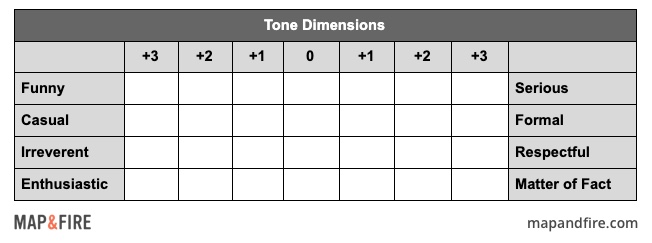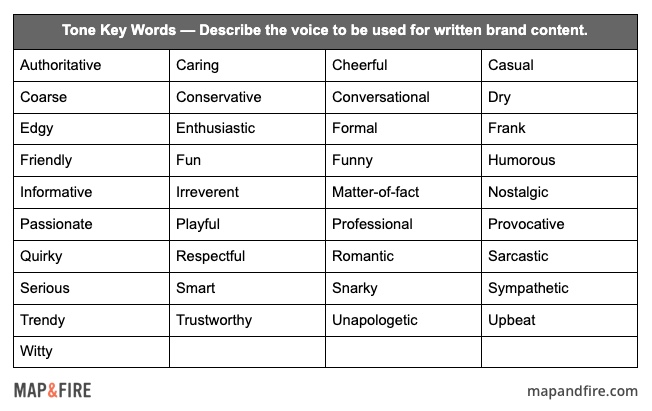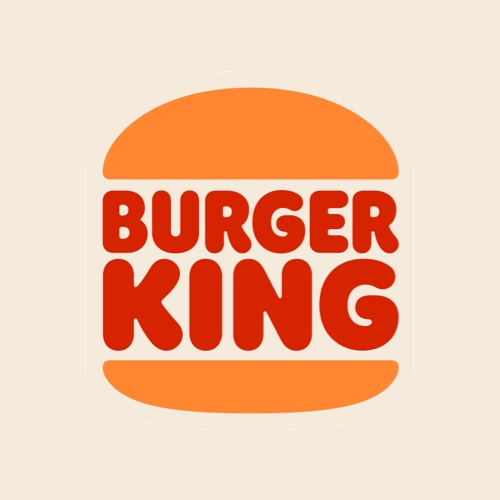Brand Tone of Voice: How-To Guide, Exercises, and Examples
Define the emotional qualities of how your brand communicates to align with your target customers.

Our Content Is Featured In:

Join 6,538 folks who receive our latest insights and you'll get immediate access to our 10 page brand strategy workbook!
Instantly analyze your brand
Use our new positioning app, SmokeLadder, to see where your B2B brand is strong, weak, and where it can stand out from the competition.
What Is Your Brand Tone of Voice?
Tone of Voice Definition
Tone of Voice (aka. your Brand TOV) describes the emotional qualities for how your brand communicates to its customers.
These Tone of Voice guidelines exist to create consistency in the brand’s communication. They allow everyone who works on marketing, sales, and support for a brand to communicate in a way that sounds like it’s coming from a singular source. That consistency across the brand’s website copy, blog posts, ads, social content, podcasts, support, and sales material all help build trust with customers.
A Brand’s Tone of Voice should be:
- Clear: Includes a simple set of rules that teams with various backgrounds and levels of knowledge can all understand
- Descriptive: Provides the necessary level of detail to help guide the subtle variations that exist in language
- Shareable: Exists in a documented form that anyone can access

Tone of Voice Exercises
To create an effective Tone of Voice for your brand, you need to understand what type of communication would best connect with your target customers. Two overarching ideas to consider with this include:
- Familiar: Within your brand’s category are there certain tone qualities that your customers would expect that you can use to help establish trust? i.e. if you’re dealing with sensitive or private information your customers will likely expect a level of respect and authority in your tone.
- Different: Like any aspect of your brand strategy, there may be opportunities to develop a position that creates contrast from the competition. This can help your brand stand out and be more memorable within the landscape. i.e. if your product or service is somewhat dry or technical, using a strategic amount of levity or casual tone could make your brand feel more accessible.
To determine the right levels of familiarity and difference you may want to embrace, you’ll need to examine the competitive market to develop a strong overall position and conduct research with your customers to hear first hand how they think and feel about your offering.
Below are two exercises you can use to clarify the emotional qualities of your Brand Tone of Voice.
Brand Tone of Voice Dimensions:
In this first exercise, you can choose a position on each spectrum of four sets of opposite words. This provides an overarching reference point of your brand’s tone of voice. Again, it’s important to consider both what your customers might expect on each dimension as well as where you could strategically adjust things to help differentiate each dimension of your tone.
The approach for this exercise was informed by research conducted by the Nielsen Norman Group. The Tone Dimension research can be found here: The Four Dimensions of Tone of Voice.
In each row below, place an “X” in the box that aligns with the Tone that would be effective for your brand.

Brand Tone of Voice Words:
Building off the Tone Dimensions, this list of Tone of Voice Words allows you to add an extra level of specificity around the brand tone of voice. For example, while your dimension may skew toward “Funny”, the words clarify whether that means “Quirky”, “Witty”, “Snarky”, or possibly another word that resonates specifically with your brand.
It’s also important to note Tone words that do not align with your brand. This is a way to create that set of checks and balances for your communication to identify when content is aligned and when it isn’t.
The Nielsen Norman Group research for this exercise can be found here: Tone of Voice Words.
Brand Tone of Voice Examples:
Below are some examples of well known brands and their Tone of Voice. You can explore a full case study for each brand to get a better sense of the content and messaging that aligns with their tone.
Burger King
Ikea
Oatly
Tesla
Brand Tone of Voice Questions
Here are 4 questions to consider as you evaluate the clarity and alignment of your Brand Tone of Voice guidelines:
- How similar is your Tone or Voice to your competitors? Is your tone roughly the same as competitors that your customers may consider? Could there be advantages to making it more or less similar?
- Have you validated your Tone’s guidelines based on customer data? Do you know enough about what your customers value and what influences their buying decisions to justify your Brand Tone of Voice?
- Do you review marketing and sales materials regularly to ensure alignment with your Tone of Voice? How frequently do you audit content and communications to see if it’s consistent across all your communication channels?
- Is your Tone of Voice shared and easily accessible to everyone on our marketing, support, and sales teams? Has everyone who creates content or communicates directly with customers reviewed your Tone of Voice to ensure they understand it?
Get Help Crafting Your Brand Tone of Voice

Free Brand & Marketing Workbook
Get immediate access to our 10 page workbook to help you define your Core Purpose, Vision, and Core Values, along with resources for Brand Archetypes, Tone of Voice, Messaging, and more!

Hands-on Brand Strategy Help
Transform your best business thinking into an actionable, shareable, growth-oriented guide. Click below to learn about the Brand Guidebook process.






